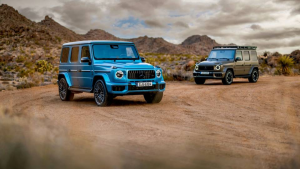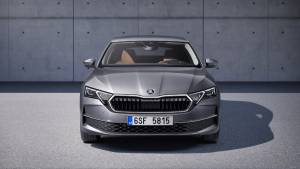Top dollar
Team OD
Updated: May 09, 2013, 04:12 PM IST
Early vintage era cars built at the end of the the 1930s and those of the early classic era, the 1940s to the 1950s, are the finest examples of automotive art. The expansive bodywork with flowing lines, acres of gleaming steel and myriad detail touches made for very impressive styling. But the making of these splendorous coaches was no easy task, you can be sure. The tooling, dies and subsequent manufacturing were expensive, time consuming and, as safety and aerodynamics gained more importance than styling, unwieldy. By the early 60s mass production friendly origami-like shapes were creeping in and eloquent lines were fading out though several examples would go on to become collector's items.
Yet this breed of car, or rather the style and manufacturing process didn't go quite extinct. Morgan Motor Cars, one of just a handful of British car manufacturers in existence since 1909, was the only one to keep that traditional line still alive. Post WWII, Morgan kept building cars that looked like they belonged to the vintage era but with contemporary powertrains. The chassis were still built from wood and the cars looked as graceful as they did in the old days but under the hood lay engines that were as modern as possible. The market for such cars was extremely limited however and hardcore loyalists weren't too fond of the blend either. Nevertheless, that did not stop Morgan.
This story however is not about Morgan but about another little known manufacturer called Bufori.
Started by three Australian-Lebanese brothers Anthony, George and Gerry Khouri in 1986, the Bufori cars were inspired by American coupes of the 1930s. They, like Morgan before them, began offering in small volumes cars that had their stylistic origins in the 1930s but came equipped with state-of-the-art powertrains. And if you are wondering where the name Bufori emerged from, it's an acronym for Beautiful, Unique, Fantastic, Original, Romantic and Irresistible. Bufori then attracted the attention of the Malaysian royal family who invested heavily in them leading to the company moving to Malaysia in 1998. From there, they began manufacturing cars that looked classic, but were full of the most luxurious and expensive materials known to man. It became so exclusively bespoke, that the base price of a Bufori La Joya rose to around 250,000 dollars or 1.13 crore rupees excluding taxes and duties.
But why is this relevant to us? Well, Bufori saw the exponential growth of the highly affluent Indians and therefore the potential to offer them a slice of their brand of exclusivity.
Bufori intends to sell the La Joya, a vintage-like coupe with contemporary technologies and luxury trappings, in India. It hopes to begin operations by the first quarter of 2011 and the cars are currently undergoing homologation at ARAI. The La Joya will be a CBU and the modalities of entering India are currently being scoped alongside the required test certification.

La Joya means 'the jewel' in Spanish, but will the Indian HNI decorate himself with this bauble? There is no denying that this car will be the most imposing automobile to be launched in India. But with a projected target of just around 10 cars in the first year, the dominant share of classic bodywork you're likely to see will remain at the vintages car shows.
There isn't a single feature on this car that's eye-catching above all of the rest. The whole thing just looks so amazing, it's hard to pinpoint any single aspect. But if this car turned up in your rear-view mirror there will be no mistaking that stainless steel mesh grille flanked by those single pod headlamps. Paint this car black and it'd look straight out of a Batman flick.
Vintage the appearance may be but that bodywork is anything but. The entire shell is made from a carbon fibre-Kevlar composite material. This makes it strong, light and highly resistant to flex but more importantly in an accident it isolates the damage to specific crumple zones, which can then be removed, remoulded and replaced. This keeps the cost of ownership low.
At first glance, though, the La Joya's cabin isn't really that impressive. That is if you do not notice the seats. The two seats in this coupe are made by Recaro, exclusively for Bufori. And they are incredibly plush with 17 adjustment levels, almost better than the seats found in a Rolls Royce, though trying to identify and then grow accustomed to which button controls what function takes some time getting used to.
Nevertheless those seats are so comfortable they take your attention away from the dashboard which looks like something that came out from a Hyundai. This isn't an aesthetically pleasing dash, and any effort to retain a classic character is ruined by that thick steering wheel, the fill-your-palm gearshift and that large expanse of mirror polished wood which is a stark contrast to the dainty analogue clocks. I think Bufori could have certainly achieved a more classic touch without kitting it out with what looks like aftermarket accessories. It could have easily placed a gated transmission module with a more elegant stick or used darker and classier looking wood rather than the bright gaudy shades our test car came in. Even the air con vents could have been classier though the stereo is something you can specify.
The La Joya will be introduced in India with a 250PS 3.3-litre V6 engine that is being sourced from Hyundai. It isn't what I drove though at Chennai, where I got to experience a smaller 2.7-litre V6 which makes 172PS and is also sourced from Hyundai. This engine isn't explosive but then neither is it ultimately powerful. It enables the La Joya to cruise around in comfort with enough reserves for a top whack of 200kmph. This top speed and 0-100kmph time under 8 seconds is possible thanks to a phenomenally high power-to-weight ratio. With the 3.3-litre V6, the performance times should improve considerably. The engine is located at the rear and directly behind the seats though the soundproofing never lets that engine noise fill the cabin even at full clip. However if you want that V6 howl to blast your eardrums, a release switch inside the glove box flips open the engine cover inside the cabin.
The La Joya has been engineered thoughtfully, so the engine is easily accessible from the rear and can be removed by simply unfastening six bolts. The five-speed automatic transmission's sequential shifts ratios nicely match the power and torque output.
The La Joya uses a steel spaceframe chassis which gives it ample rigidity while being light and averse to corrosion. At both the front and rear the 17-inch BBS light magnesium alloy wheels and 225/45 Continental Sport tyres are suspended from an independent double wishbone suspension with anti-roll bars, coil springs and adjustable shock absorbers. It also has massive discs all around with ABS and EBD. While I did not experience the ride quality, the La Joya has very little roll and driven hard on the highways should be extremely stable and confidence inspiring. On the short stint at the MMST, the La Joya felt way lighter and easier to maneuver than it looks - though it appears to weigh well over two tonnes visually. Steering is precise and directional changes whether at low or high speeds are confidently executed.
The La Joya, interestingly, is completely customisable so you can specify the colours for the exteriors or interior trim, materials right down to the grain and type of wood. This makes it a very personal car. But at over Rs 1.5 crore it should have been named BUFORE, denoting expensive more than exclusive!
Related Stories
Advertisement
Advertisement
Top Stories
Advertisement
Latest Videos
Most Popular
Advertisement
1
2
1
2
Network18 Updates
Compare










